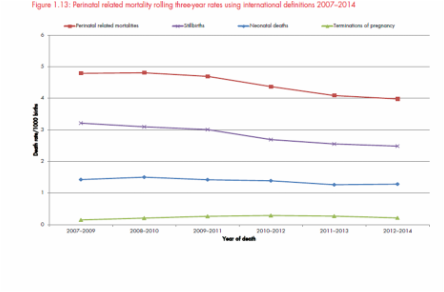I shouldn’t be surprised though, we have known for the longest time that awareness reduces stillbirth. There are multiple examples of this in the research literature. Here are some examples:
- A large multi-centered randomised controlled trial of 68,000 women conducted in UK and France showed that maternal awareness of fetal movements reduced stillbirth from an expected rate of 4:1000 to 2.8 :1000 whether or not the women counted movements or were generally aware. (Grant et al 1989)
- A large Norwegian study showed that when women were educated about the importance of monitoring fetal movements and their care of women reporting reduced movements standardised that the stillbirth rate fell during the intervention from 4.2% to 2.4%. (Tviet et al 2009)
- An English study showed that when health care providers monitored fetal growth (poor fetal growth is one of the main contributors to stillbirth) that the stillbirth rate dropped in the centres that adopted the approach. Importantly this reduction was found to be specifically due to fewer deaths with fetal growth restriction, while deaths due to other causes remained unchanged. (Gardosi 2011)
I heard someone say recently “Awareness brings knowledge and with knowledge comes action” This was exactly what happened in the case of the mother who saved the life of her baby and indeed all the other mothers and clinicians who saved the lives of babies in the three studies I mentioned above. They became aware of the importance of caring for the vulnerable baby and acted to protect that baby from harm.
So what needs to happen to save more babies lives?
Two things. The mother needs to be aware of risk factors for stillbirth and so does her maternity care provider. The woman needs to know the kinds of things to look out for and immediately report these to her care provider to keep her baby safe AND her care provider needs to care for the pregnant woman and her baby to detect and manage poor fetal growth and also act appropriately and from an evidence base whenever the woman expresses concerns.
Simple? …..

 RSS Feed
RSS Feed
